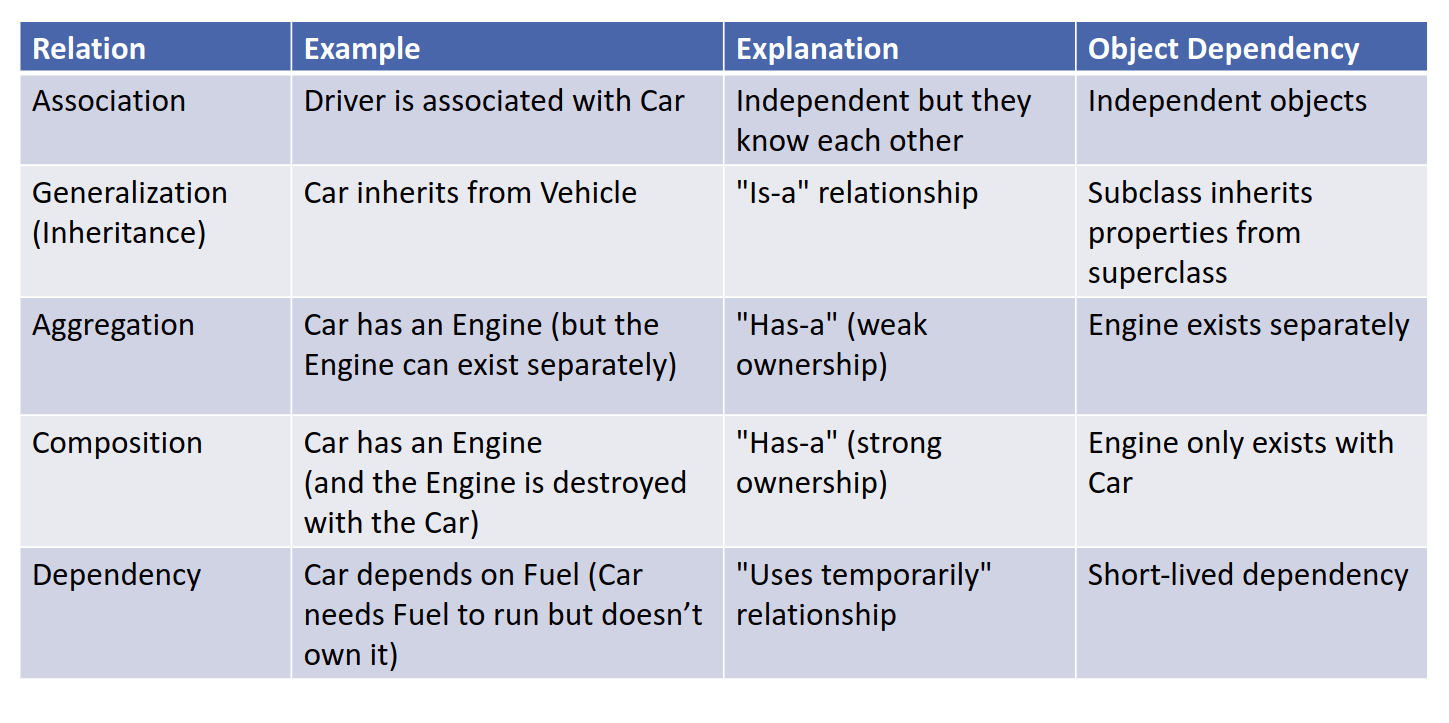Java Basics
- Java (Compiled to bytecode, then interpreted by the JVM)
- C# (Compiled to Intermediate Language, then executed by the .NET runtime)
- Python (JIT compilers like PyPy improve performance)
Properties:
- Java is a high-level, object-oriented language.
- “Write Once, Run Anywhere” makes it platform- independent.
- Automatic garbage collection manages memory.
- Strong typing prevents runtime errors.
- Supports multi-threading for concurrent execution.
- Rich APIs enable diverse applications.
- Used in enterprise, Android, and large-scale systems.
Data Types
byte smallNumber = 100;
// 1-byte integer (-128 to 127)
short shortNumber = 32000;
// 2-byte integer (-32,768 to 32,767)
int age = 25;
// 4-byte integer (-2^31 to 2^31-1)
long bigNumber = 123456789L;
// 8-byte integer (-2^63 to 2^63-1)
float pi = 3.14f; //real-number
// 4-byte floating-point Floating-point types
double precisePi = 3.1415926535; //real-
number
// 8-byte floating-point (higher precision)
char letter = 'A';
// 2-byte character (Unicode) Character type
boolean isStudent = true; //logical
// true or false Boolean type- In Java, a complex type refers to any data type that is not a primitive type.
- These types are also known as reference types. (They store references (memory addresses) rather than the actual value. )
- They are object-based and typically contain multiple pieces of data or functions together.
// In Java, the runtime always starts with the
//main method.
//The main method is the entry point where all
//code execution begins.
public static void main(String[] args)
// Here, static allows the JVM to call the main
// method directly without creating an object
//when the program starts.- Static variables belong to the class, not to any object.
- Shared across all instances of the class
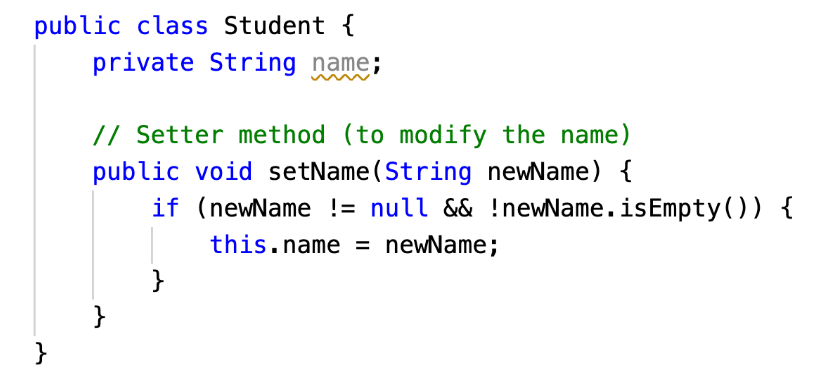
-
Except for some objects like String, Arrays, all objects are created using «new» keyword with a constructor.
-
Constructors in Java do not have a return type.
-
A class in Java cannot exist without a constructor.
-
If you do not define any constructor, Java automatically creates a default constructor in the background.
-
this(): Calls another constructor within the same class.
-
this: Passes the current object as a reference.
Example:
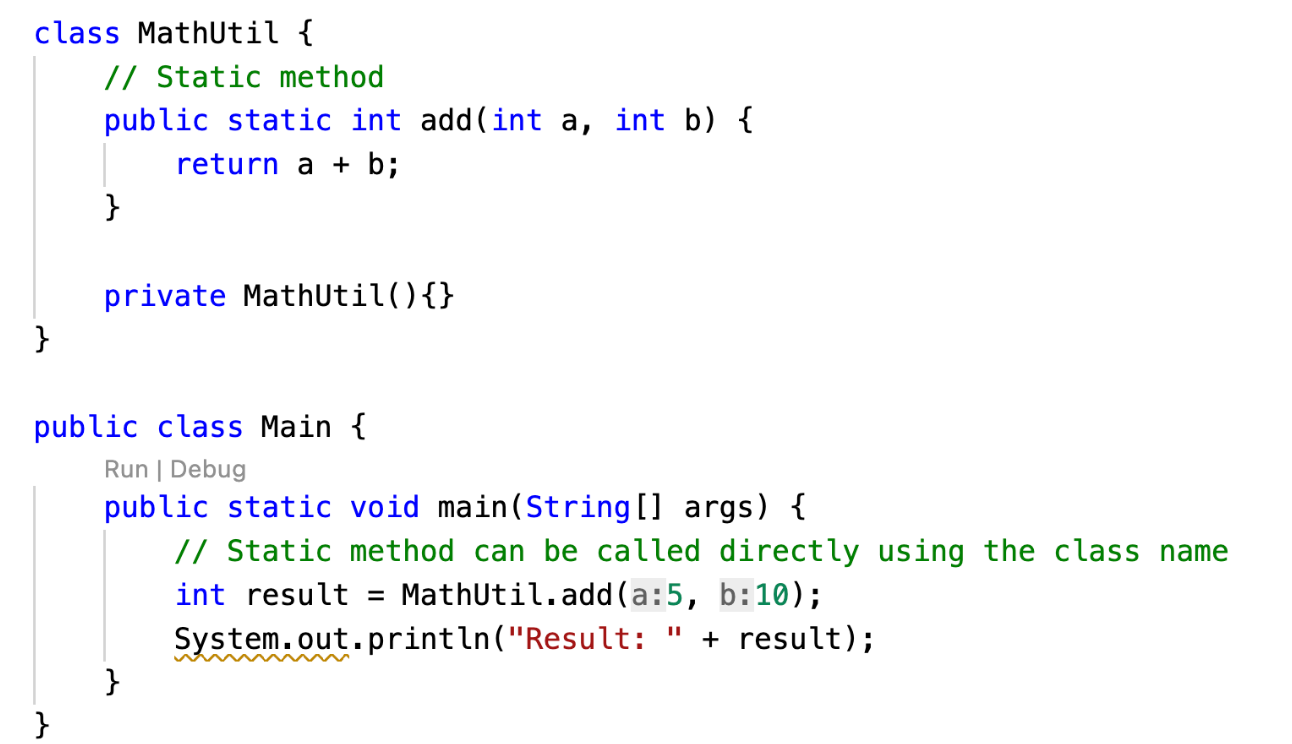
Error Handling
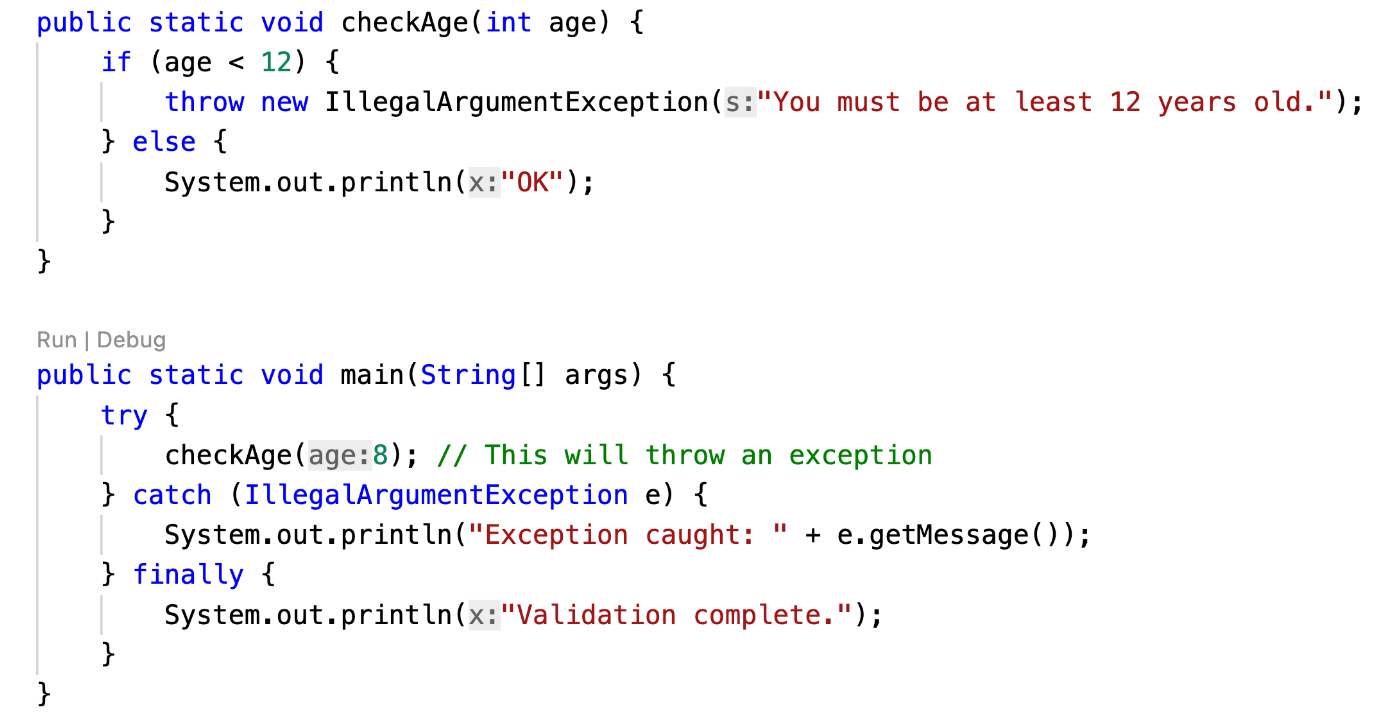
Throws tells compiler that it doesn’t raise but passes the exception.

Checked
- IOException
- FileNotFoundException
- SQLException
- ParseException
- ClassNotFoundException
Unchecked
- NullPointerException
- ArrayIndexOutOfBoundsException
- ArithmeticException
- IllegalArgumentException
- NumberFormatException
OOP
- Reusability - Code can be reused through inheritance, reducing redundancy.
- Encapsulation - Data is protected and only accessible through defined methods.
- Abstraction - Hides complex implementation, showing only necessary details.
- Modularity - Code is organized into separate objects, making it easier to maintain.
- Flexibility - Polymorphism allows objects to be used in different ways.
- Scalability - Easier to extend and modify programs without affecting existing code.
- Security - Restricts unauthorized access to data through encapsulation.
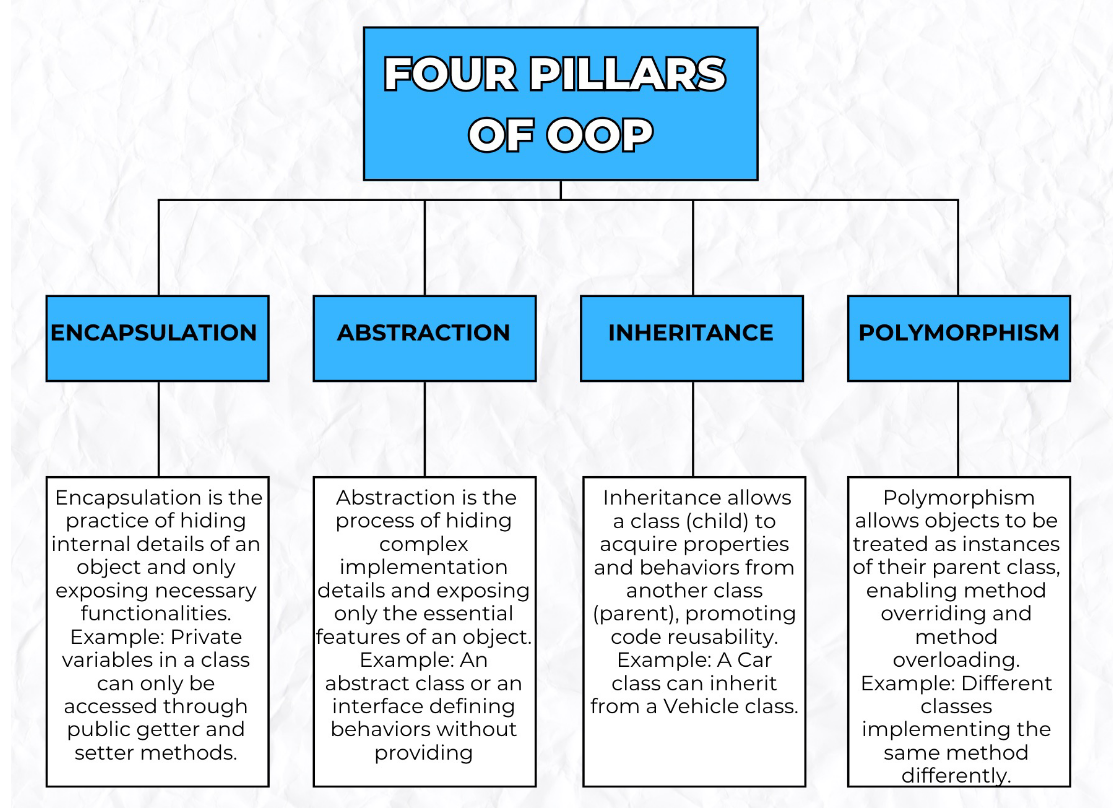
Encapsulation
Encapsulation in object-oriented programming (OOP) is the process of hiding data (variables) and providing controlled access to them through methods within a class.
- Data Security: Prevents direct access to variables, reducing the risk of misuse.
- Controlled Access: Provides controlled access through getter and setter methods.
- Code Maintenance and Flexibility: If variable names change, external code remains unaffected.
- Data Validation: setter methods allow validation checks before modifying values.
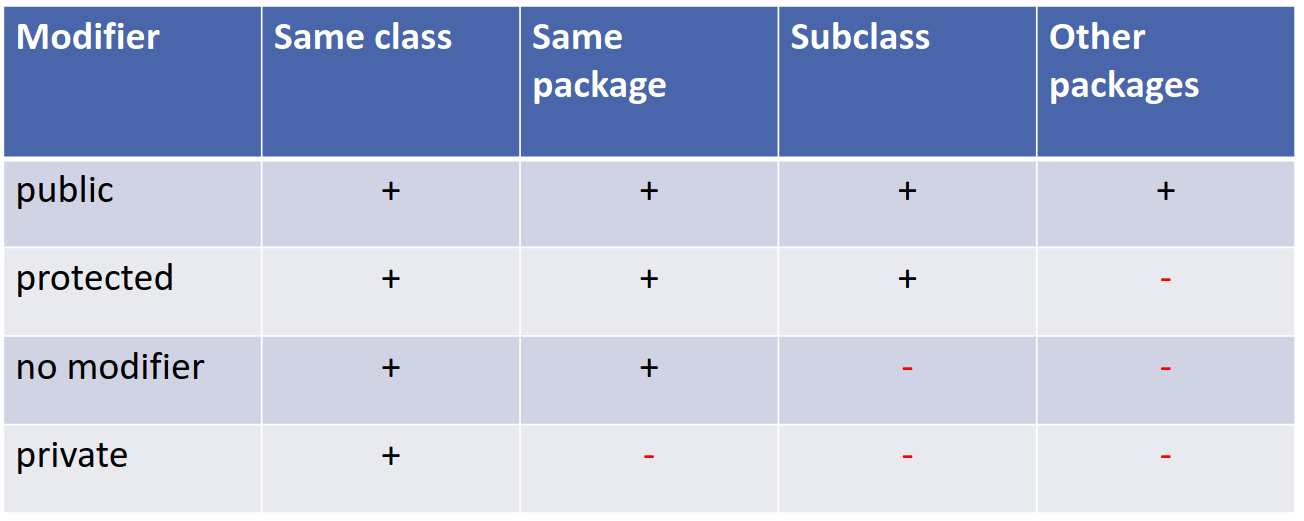
Inheritance
- Inheritance allows a class to acquire the attributes and behaviors (methods) of another class.
- We can reuse properties (fields) and methodsof a parent class in a child class.
- «is-a » relation
kw: extends
- In Java, the extends keyword is used to create a subclass (child class) from a superclass (parent class).
- It allows the child class to inherit all the fields (variables) and methods of the parent class.
kw: super
- It is used to access parent class members from the child class.
- You can use it to call the constructor, methods, or variables of the superclass
You can only extend one class at a time (Java supports single inheritance)
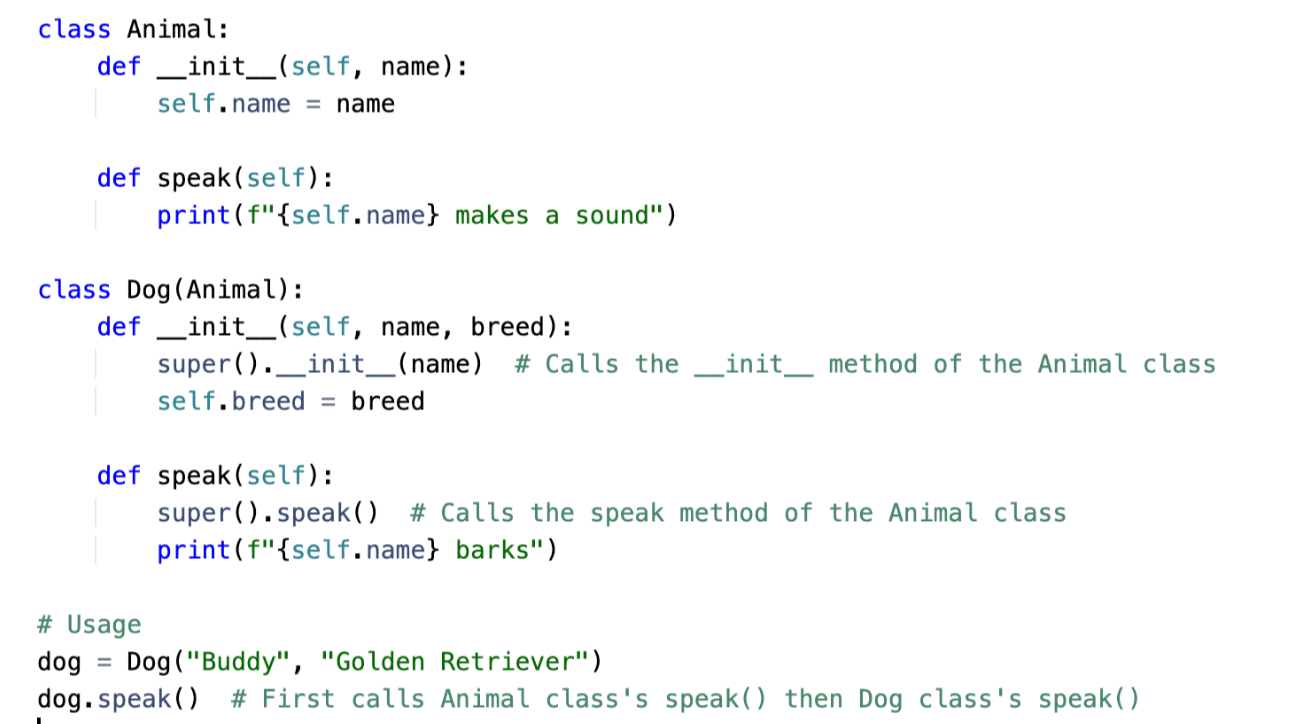
Polymorphism
- Polymorphism is the ability of objects of different classes to respond to the same method call in different ways. One interface, multiple implementations.

Override
- The method must be defined in both superclass and subclass.
- The method signature (name + parameters) must be identical.
- The method in the subclass must have equal or more accessible access modifier.
- Only inherited methods can be overridden
- The return type must be the same or a subclass (covariant) of the method in the superclass.
Overload
Overloading is resolved at compile time, so it’s also called compile-time polymorphism or static binding.
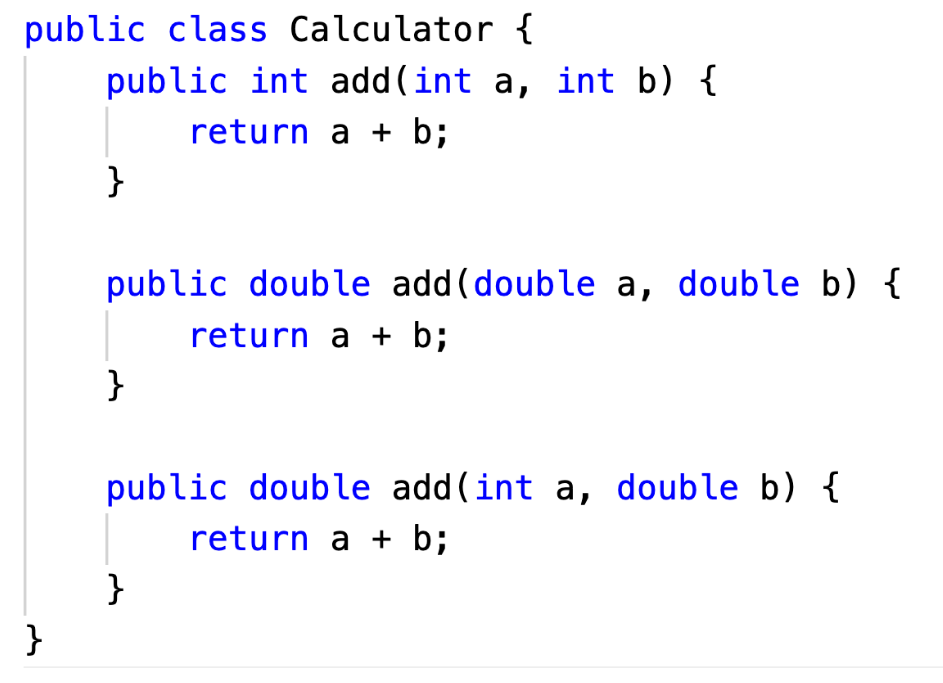
Differences
Method Overloading: • Occurs within the same class or in subclasses. • The method name is the same, but the parameters must differ (either the number of parameters or their types). • The return type can be the same or different. • Overloading is resolved at compile time (static polymorphism).
Method Overriding: • Occurs between a superclass and a subclass. • The method name and the parameter list must be the same in both the superclass and subclass. • The return type must also be the same or a subtype (covariant return type). • Overriding is resolved at runtime (dynamic polymorphism
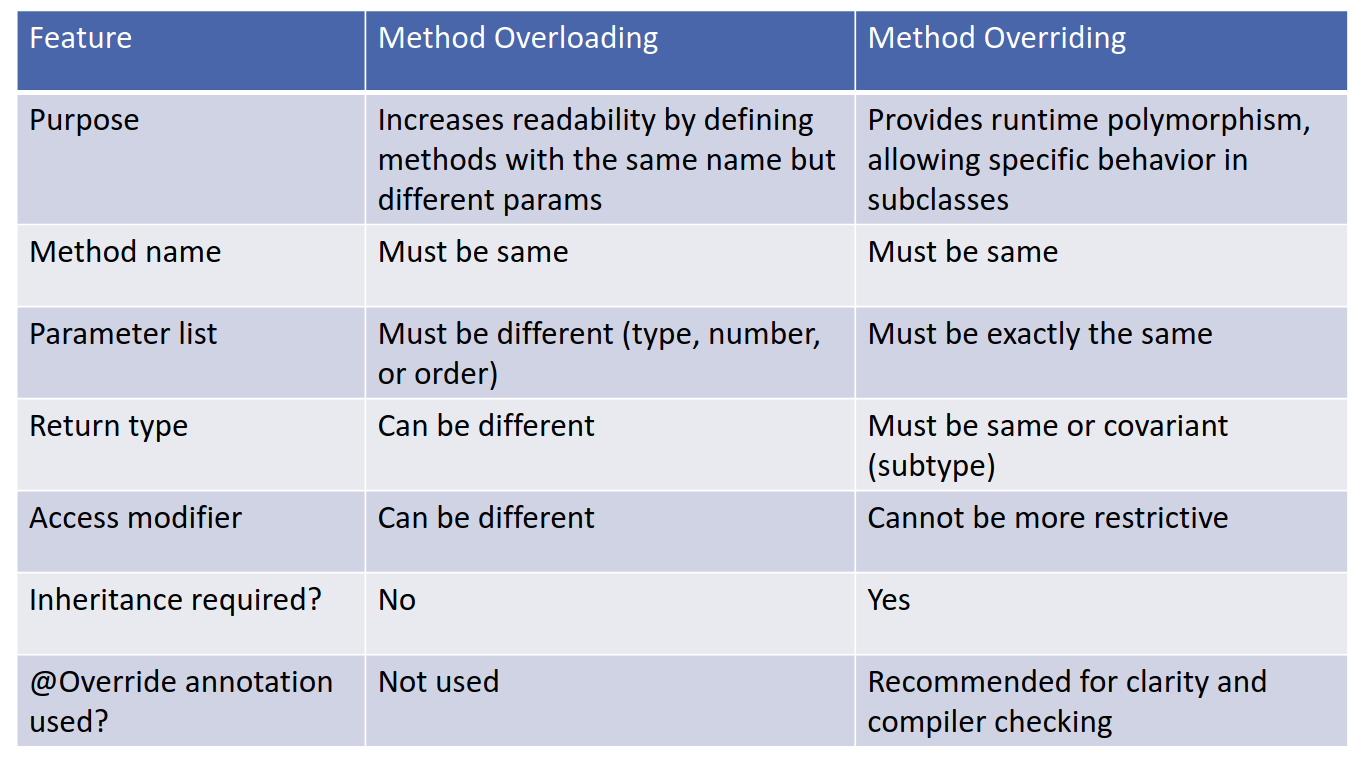
Abstract Classes
An abstract class in Java is a class that cannot be instantiated, but can be extended by other classes.
- It is used as a base class to define a common interface and optionally some common behavior for its subclasses.
- Declared using the abstract keyword.
- May contain abstract methods (methods without a body) and concrete methods (with implementation).
- Can have constructors, fields, and static blocks.
- Cannot be instantiated directly.
- Used when you want to provide a common base and allow subclasses to implement specific behavior.
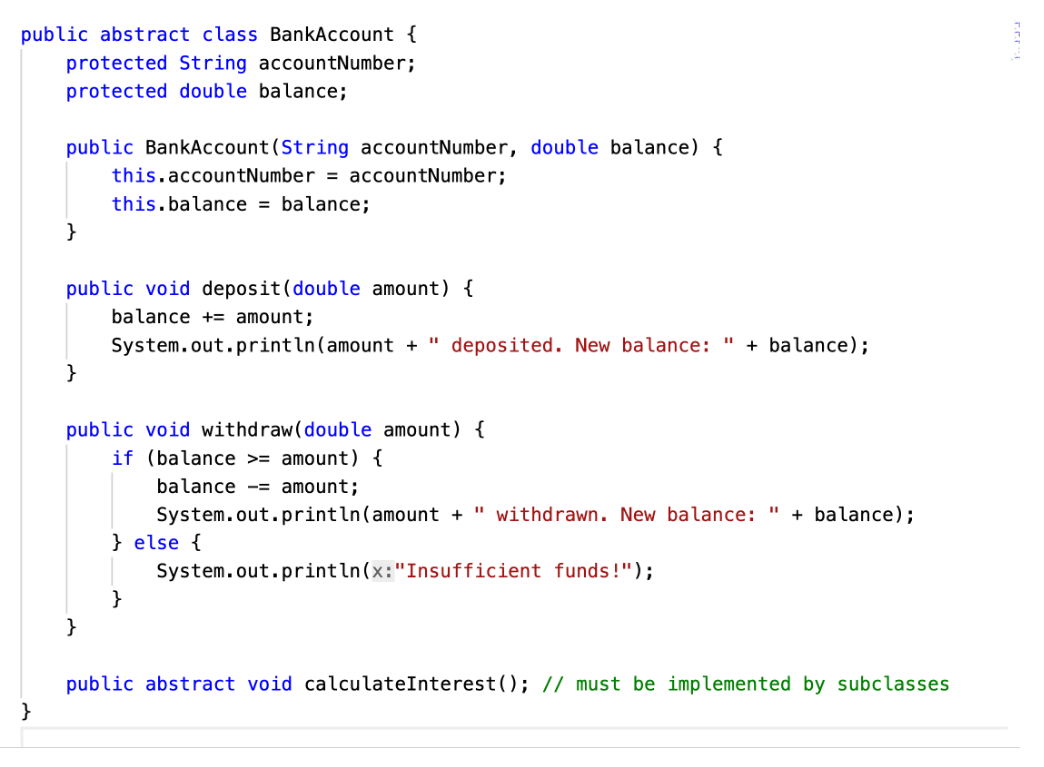
Interfaces
An interface in Java is a reference type, similar to a class, that can contain only constants, method signatures, default methods, static methods, and nested types.
- It cannot contain instance fields or constructors.
- Interfaces define abstract methods that must be implemented by any class that implements the interface.


Can a Class Implement Multiple Interfaces?
• Yes! In Java, a class can implement multiple interfaces. • This is one of the key advantages of using interfaces, as Java does not support multiple inheritance of classes but supports multiple inheritance of interfaces.

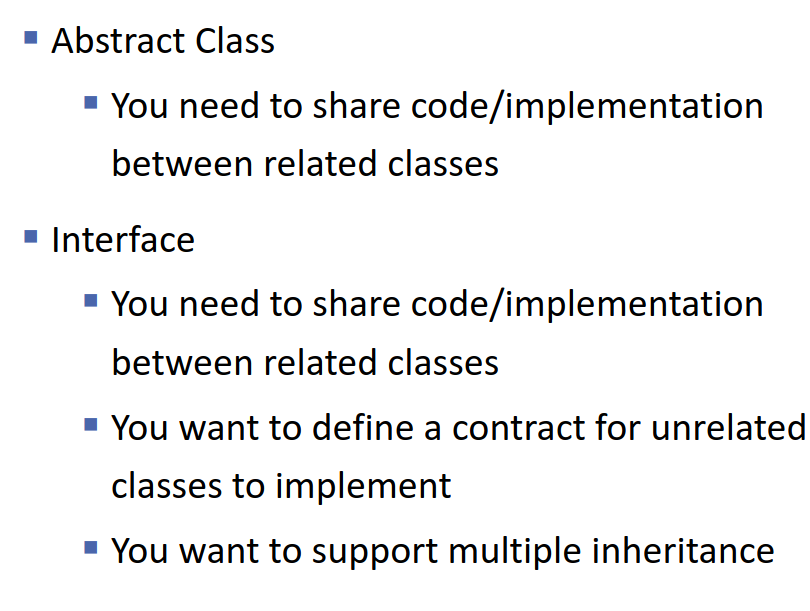
UML
Use Case
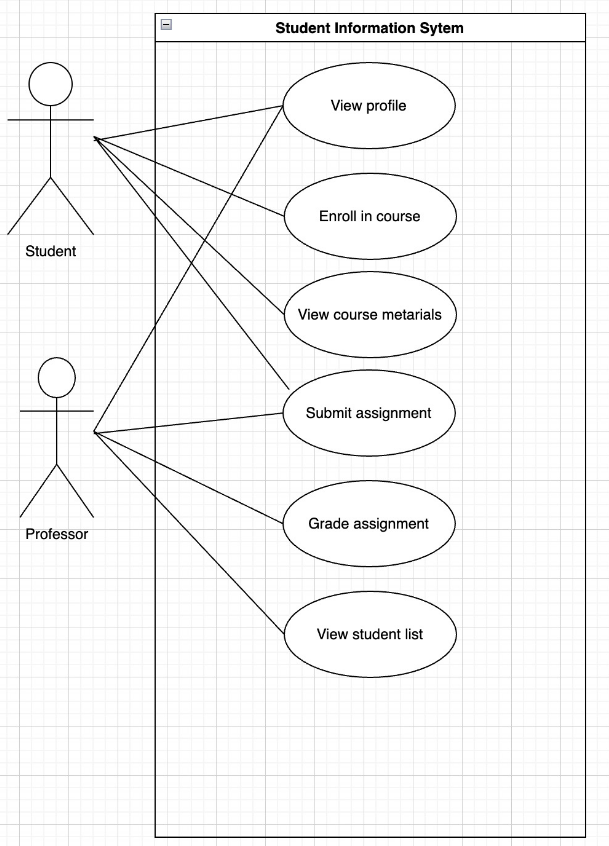
Class Diagram
Association: A Driver is associated with a Car
Generalization (Inheritance): Car inherits from Vehicle. “is-a” relationship
Dependency: A Car uses A FuelPump, One class temporarily depends on another.
- One-to-One (1..1): An employee has one ParkingSpot
- One-to-Many (1..*): A Library has many Books
- Many-to-Many (..): A Student can enroll in multiple Courses, and a Course can have multiple Students
Aggregation & Composition
- “has-a” relationship
- Aggregation represents a relationship where the component (Engine) can exist independently.
- Composition means that the component (Engine) cannot exist independently.
